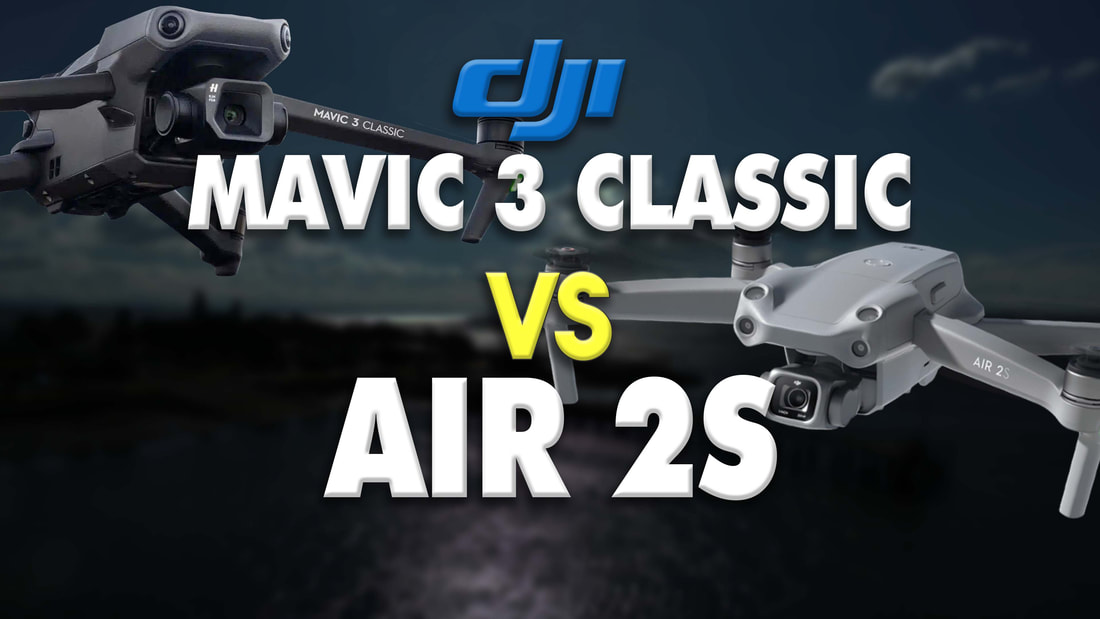When it comes to camera capabilities, the Mavic 3 Classic is the clear winner. Its 4/3" CMOS Hasselblad sensor provides better low-light performance and more detailed images. The 12-bit RAW image capabilities also allow for more control and flexibility in post-processing. Additionally, the Mavic 3 Classic has an adjustable aperture, which allows you to control the amount of light entering the lens, making it easier to capture stunning images and videos.
In terms of flight time, the Mavic 3 Classic has an impressive 46 minutes of flight time, compared to the Air 2S's 31 minutes. This means that the Mavic 3 Classic can stay in the air for longer, giving you more time to capture stunning footage.
Both drones come with Ocusync 3+ and Ocusync 3, respectively, which provide stable and reliable video transmission with a range of up to 15km for the Mavic 3 Classic and 12km for the Air 2S. The Mavic 3 Classic also comes with Cruise Control, which allows you to maintain a consistent speed and altitude while flying. DJI recently added waypoints to the Mavic 3 Classic, this allows you to plan repeatable missions without having to touch the control sticks.
The Mavic 3 Classic also has omnidirectional obstacle avoidance, which provides better protection from collisions. The Air 2S, on the other hand, has 4-way obstacle avoidance, which is less advanced than the Mavic 3 Classic.
In terms of intelligent flight modes, both drones have most of the intelligent flight modes that we have come to love. The Mavic 3 Classic also has Night Shots, which allows you to take stunning night photos and videos.
In conclusion, the DJI Mavic 3 Classic is the better drone overall when compared to the DJI Air 2S. It has a more advanced camera system, longer flight time, Cruise Control, omnidirectional obstacle avoidance, Night Shots, and more. However, it comes at a higher price point. The DJI Air 2S is still a great drone and is a great option for those on a budget or who don't need all the advanced features of the Mavic 3 Classic. Ultimately, it comes down to your needs and preferences as a drone enthusiast.
When deciding on the right drone for you, it's important to consider your budget, the features you need, and the type of footage you want to capture. As always, make sure to read reviews and watch videos from other drone pilots before making a final decision.
In terms of flight time, the Mavic 3 Classic has an impressive 46 minutes of flight time, compared to the Air 2S's 31 minutes. This means that the Mavic 3 Classic can stay in the air for longer, giving you more time to capture stunning footage.
Both drones come with Ocusync 3+ and Ocusync 3, respectively, which provide stable and reliable video transmission with a range of up to 15km for the Mavic 3 Classic and 12km for the Air 2S. The Mavic 3 Classic also comes with Cruise Control, which allows you to maintain a consistent speed and altitude while flying. DJI recently added waypoints to the Mavic 3 Classic, this allows you to plan repeatable missions without having to touch the control sticks.
The Mavic 3 Classic also has omnidirectional obstacle avoidance, which provides better protection from collisions. The Air 2S, on the other hand, has 4-way obstacle avoidance, which is less advanced than the Mavic 3 Classic.
In terms of intelligent flight modes, both drones have most of the intelligent flight modes that we have come to love. The Mavic 3 Classic also has Night Shots, which allows you to take stunning night photos and videos.
In conclusion, the DJI Mavic 3 Classic is the better drone overall when compared to the DJI Air 2S. It has a more advanced camera system, longer flight time, Cruise Control, omnidirectional obstacle avoidance, Night Shots, and more. However, it comes at a higher price point. The DJI Air 2S is still a great drone and is a great option for those on a budget or who don't need all the advanced features of the Mavic 3 Classic. Ultimately, it comes down to your needs and preferences as a drone enthusiast.
When deciding on the right drone for you, it's important to consider your budget, the features you need, and the type of footage you want to capture. As always, make sure to read reviews and watch videos from other drone pilots before making a final decision.
